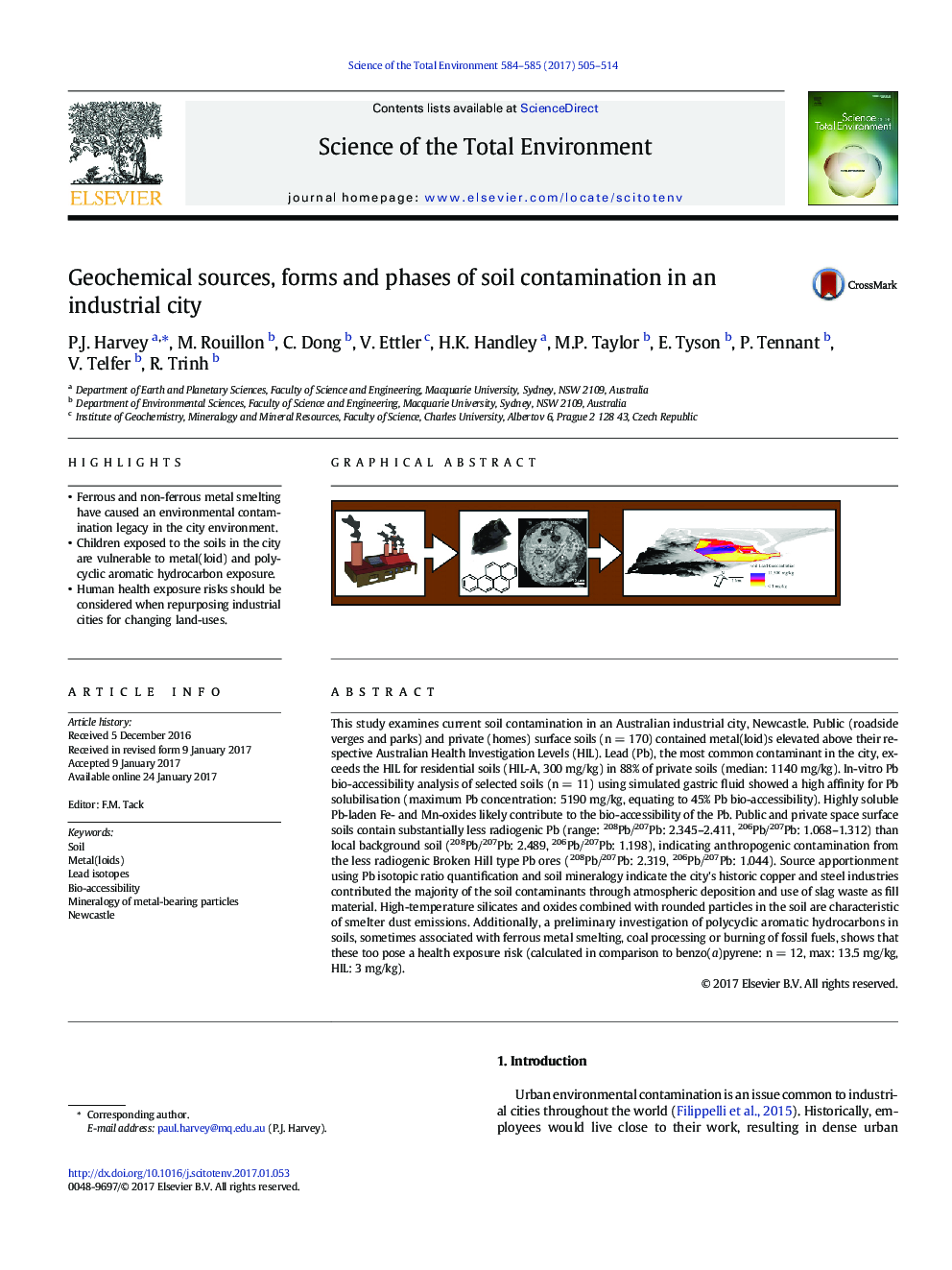| کد مقاله | کد نشریه | سال انتشار | مقاله انگلیسی | نسخه تمام متن |
|---|---|---|---|---|
| 5751891 | 1619708 | 2017 | 10 صفحه PDF | دانلود رایگان |
- Ferrous and non-ferrous metal smelting have caused an environmental contamination legacy in the city environment.
- Children exposed to the soils in the city are vulnerable to metal(loid) and polycyclic aromatic hydrocarbon exposure.
- Human health exposure risks should be considered when repurposing industrial cities for changing land-uses.
This study examines current soil contamination in an Australian industrial city, Newcastle. Public (roadside verges and parks) and private (homes) surface soils (n = 170) contained metal(loid)s elevated above their respective Australian Health Investigation Levels (HIL). Lead (Pb), the most common contaminant in the city, exceeds the HIL for residential soils (HIL-A, 300 mg/kg) in 88% of private soils (median: 1140 mg/kg). In-vitro Pb bio-accessibility analysis of selected soils (n = 11) using simulated gastric fluid showed a high affinity for Pb solubilisation (maximum Pb concentration: 5190 mg/kg, equating to 45% Pb bio-accessibility). Highly soluble Pb-laden Fe- and Mn-oxides likely contribute to the bio-accessibility of the Pb. Public and private space surface soils contain substantially less radiogenic Pb (range: 208Pb/207Pb: 2.345-2.411, 206Pb/207Pb: 1.068-1.312) than local background soil (208Pb/207Pb: 2.489, 206Pb/207Pb: 1.198), indicating anthropogenic contamination from the less radiogenic Broken Hill type Pb ores (208Pb/207Pb: 2.319, 206Pb/207Pb: 1.044). Source apportionment using Pb isotopic ratio quantification and soil mineralogy indicate the city's historic copper and steel industries contributed the majority of the soil contaminants through atmospheric deposition and use of slag waste as fill material. High-temperature silicates and oxides combined with rounded particles in the soil are characteristic of smelter dust emissions. Additionally, a preliminary investigation of polycyclic aromatic hydrocarbons in soils, sometimes associated with ferrous metal smelting, coal processing or burning of fossil fuels, shows that these too pose a health exposure risk (calculated in comparison to benzo(a)pyrene: n = 12, max: 13.5 mg/kg, HIL: 3 mg/kg).
173
Journal: Science of The Total Environment - Volumes 584â585, 15 April 2017, Pages 505-514
